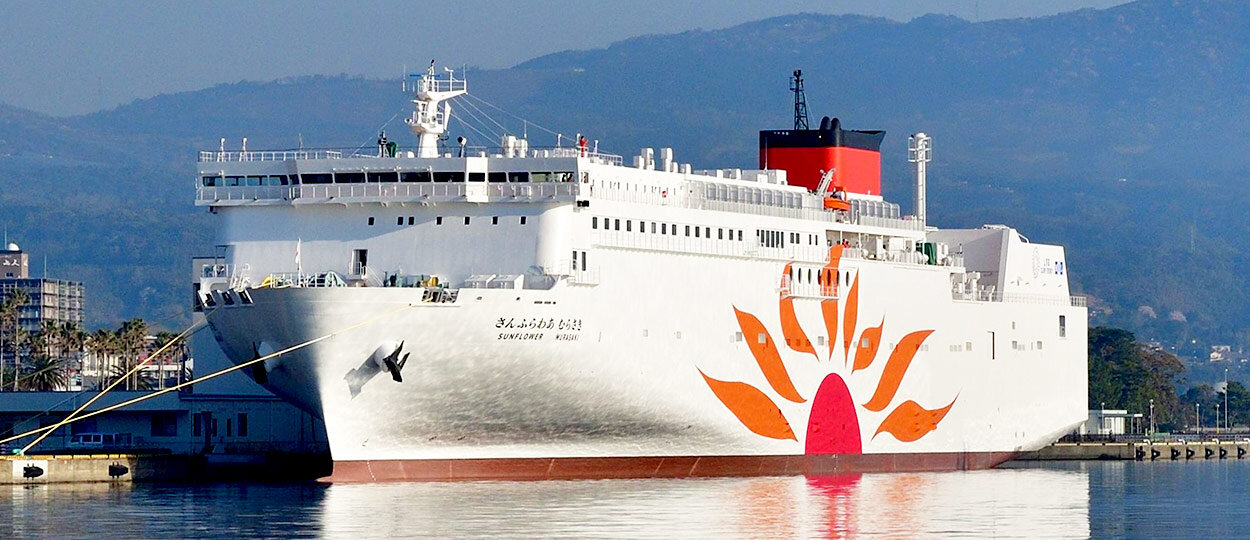Japan’s second LNG-powered ferry, Sunflower Murasaki, has entered service on the Osaka-Beppu route, according to shipping giant MOL.
The LNG-powered ferry, owned by MOL and operated by its group company Ferry Sunflower, started serving the route between Sunflower Ferry Terminal and Beppu International Tourist Port as a replacement for the ferry Sunflower Cobalt on April 14.
Japan’s first LNG-powered ferry and Sunflower Murasaki’s sister vessel, Sunflower Kurenai, began serving this route on January 13.
MOL says the new vessels offers greater transport capacity and convenience for both cargo and passenger transport compared to compared to earlier ferries.
Also, the have greater capacity to load trucks and provide a larger, more comfortable room for truck drivers.
These are Japan’s first ferries to adopt a high-performance dual-fuel engine, which can run on both LNG and heavy fuel oil.
MOL expects the use of LNG fuel to reduce emissions of carbon dioxide (CO2) by about 25 percent, and sulfur oxide (SOx) by virtually 100 percent.
Mitsubishi Shipbuilding, a part of Mitsubishi Heavy Industries, built both Sunflower Kurenai and Sunflower Murasaki.
Besides these ships, MOL ordered two more LNG-powered ferries at compatriot shipbuilder Naikai Zosen.
These 199.4 meters long LNG-powered ferries will join its unit MOL Ferry in 2025 and will replace two ships that MOL Ferry currently operates on the Oarai-Tomakomai route.
MOL also decided to integrate the businesses of its subsidiaries, MOL Ferry and Ferry Sunflower, with the new company launching operations on October 1, 2023.

